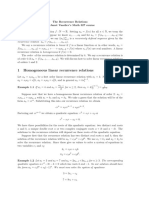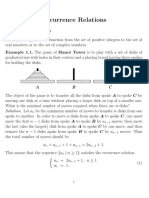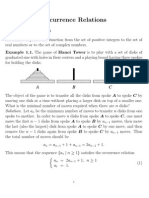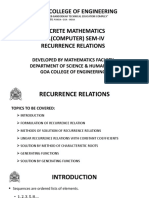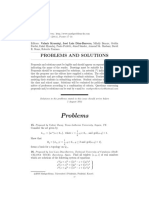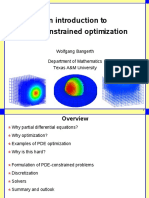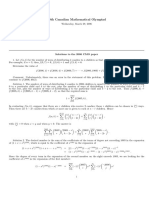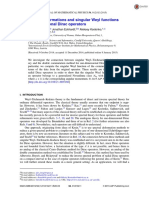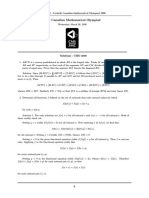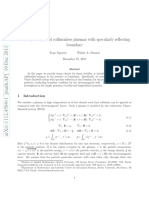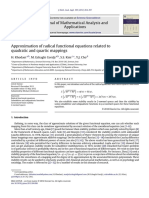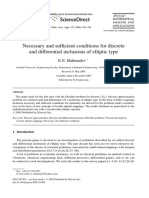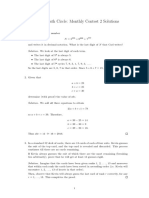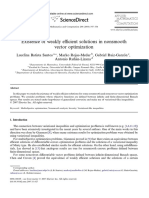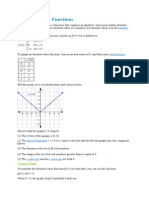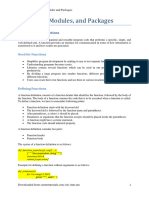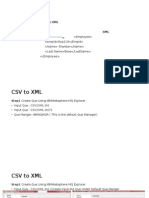0% found this document useful (0 votes)
306 views8 pagesChapter 7. Advanced Counting Techniques
This document discusses advanced counting techniques, specifically recurrence relations. It defines a recurrence relation as an equation that expresses the nth term of a sequence in terms of previous terms. It provides examples of recurrence relations and their solutions. It then discusses techniques for solving both linear homogeneous and non-homogeneous recurrence relations algebraically by finding the characteristic equation and roots. The key steps are finding coefficients c1 and c2, solving the quadratic equation to get roots r1 and r2, defining the nth term involving r1 and r2, and determining coefficients by the initial conditions.
Uploaded by
hungkgCopyright
© Attribution Non-Commercial (BY-NC)
We take content rights seriously. If you suspect this is your content, claim it here.
Available Formats
Download as PDF, TXT or read online on Scribd
0% found this document useful (0 votes)
306 views8 pagesChapter 7. Advanced Counting Techniques
This document discusses advanced counting techniques, specifically recurrence relations. It defines a recurrence relation as an equation that expresses the nth term of a sequence in terms of previous terms. It provides examples of recurrence relations and their solutions. It then discusses techniques for solving both linear homogeneous and non-homogeneous recurrence relations algebraically by finding the characteristic equation and roots. The key steps are finding coefficients c1 and c2, solving the quadratic equation to get roots r1 and r2, defining the nth term involving r1 and r2, and determining coefficients by the initial conditions.
Uploaded by
hungkgCopyright
© Attribution Non-Commercial (BY-NC)
We take content rights seriously. If you suspect this is your content, claim it here.
Available Formats
Download as PDF, TXT or read online on Scribd
/ 8



